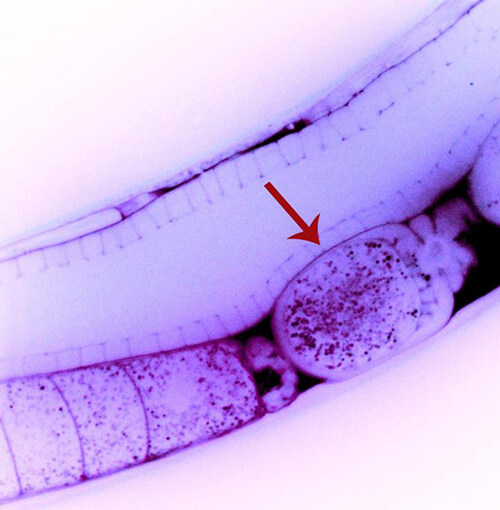


As of Beijing time The data is from a third-party organization and is only for reference.
For actual information, please refer to:www.eastmoney.com
Address: 20 Maguire Road, Suite 103, Lexington, MA 02421(America)
Tel: +1(626)986-9880
Address: Allia Future Business Centre Kings Hedges Road Cambridge CB4 2HY, UK
Tel: 0044 7790 816 954
Email: marketing@medicilon.com
Address: No.585 Chuanda Road, Pudong New Area, Shanghai (Headquarters)
Postcode: 201299
Tel: +86 (21) 5859-1500 (main line)
Fax: +86 (21) 5859-6369
© 2023 Shanghai Medicilon Inc. All rights reserved Shanghai ICP No.10216606-3
Shanghai Public Network Security File No. 31011502018888 | Website Map


Business Inquiry
Global:
Email:marketing@medicilon.com
+1(626)986-9880(U.S.)
0044 7790 816 954 (Europe)
China:
Email: marketing@medicilon.com.cn
Tel: +86 (21) 5859-1500



The basics of genetic inheritance are well known: parents each pass half of their DNA to their offspring during reproduction. This genetic recipe is thought to contain all of the information that a new organism needs to build and operate its body.

A suspected agent of nongenetic inheritance—double-stranded RNA (dsRNA)—has been caught in the act. It has been observed leaving a parent’s circulation and entering an unfertilized egg cell, where it persisted even after the cell’s fertilization. Most significantly, the dsRNA’s gene-silencing effect also persisted, affecting gene expression in offspring.
The finding that dsRNA can be passed from one generation to the next—and acts so simply, so directly—comes as a surprise. It had been suspected that dsRNA would have to act indirectly, by altering parental DNA, which would then be passed on to offspring. Presumably, circulating dsRNA would be vulnerable to the natural defenses of living cells, which act to counter dsRNA from viruses.
Yet dsRNA was observed being directly transferred between generations in the worm Caenorhabditis elegans. Fluorescently labeled dsRNA was introduced into the worm’s circulatory system, and then the dsRNA was watched as it physically moved from the circulation of a parent worm into an egg cell that was carried by the parent and waiting to be fertilized.
This work was carried out by a team of scientists led by Antony Jose, Ph.D., an assistant professor of cell biology and molecular genetics at the University of Maryland. Details of the work appeared October 17 in the Proceedings of the National Academy of Sciences (PNAS), in an article entitled, “Extracellular RNA Is Transported from One Generation to the Next in Caenorhabditis elegans.”
In a surprising turn of events, some of the dsRNA molecules could not silence genes in the parent because the dsRNA sequence did not match any of the parent’s genes. But the dsRNA molecules did silence genes in the offspring, when the new worm gained a copy of the matching gene from its other parent. This suggests that, in some cases, gene silencing by dsRNA might be able to skip an entire generation.
“Intergenerational transfer of dsRNA occurs even in animals that lack any DNA of matching sequence, and dsRNA that reaches progeny can spread between cells to cause gene silencing,” wrote the authors of the PNAS article. “Surprisingly, extracellular dsRNA can also reach progeny without entry into the cytosol, presumably within intracellular vesicles.”
“Fluorescently labeled dsRNA is imported from extracellular space into oocytes along with yolk and accumulates in punctate structures within embryos. Subsequent entry into the cytosol of early embryos causes gene silencing in progeny.”
According to Dr. Jose, egg cells use the same mechanism to absorb nutrients as they prepare for fertilization. “The next generation is not only getting nutrition,” he noted, “it’s also getting information.”
These results, the authors concluded, demonstrate the transport of extracellular RNA from one generation to the next to regulate gene expression in an animal and thus suggest a mechanism for the transmission of experience-dependent effects between generations. Recent research has shown that, in some species, parents’ life experiences can alter their offspring. Being underfed, exposed to toxins, or stricken by disease can cause changes in a parent’s gene expression patterns, and in some cases, these changes can be passed down to the next generation.
“It’s shocking that we can see dsRNA cross generational boundaries,” said Dr. Jose. “Our results provide a concrete mechanism for how the environment in one generation could affect the next generation. But it’s doubly surprising to see that a parent can transmit the information to silence a gene it doesn’t have.”
“There are hints that similar things could be happening in humans. We know that RNA exists in the human bloodstream. But, we don’t know where the RNA molecules are coming from, where they’re going, or exactly what they’re doing. Our work reveals an exciting possibility—they could be messages from parents to their offspring.”
 Relevant
news
Relevant
news